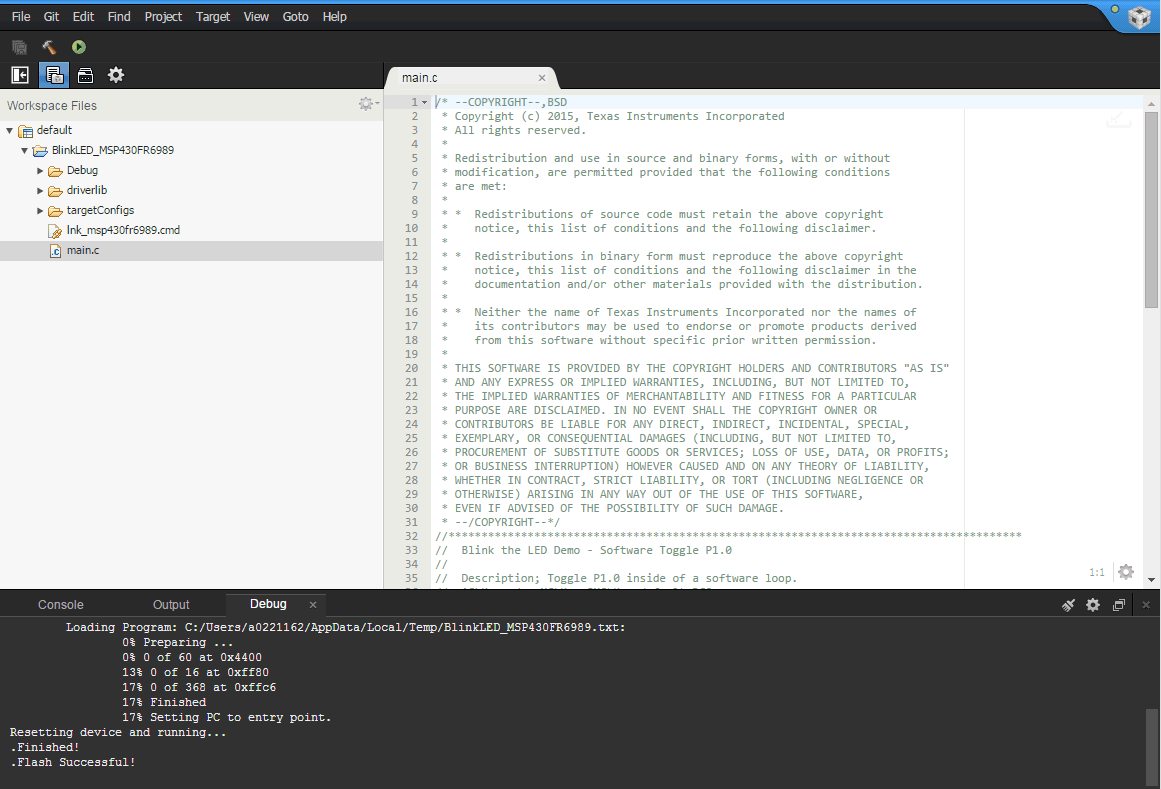SLAU678C March 2016 – November 2022
- Abstract
- Trademarks
- 1Getting Started
- 2Hardware
- 3Software Examples
- 4Resources
- 5FAQ
- 6Schematics
- 7Revision History
4.1.1.2 Code Composer Studio Cloud
Code Composer Studio Cloud (CCS Cloud) is a web-based IDE that enables you to quickly create, edit, build and debug applications for your LaunchPad development kit (see Figure 4-2). No need to download and install large software packages, simply connect your LaunchPad development kit and begin. You can choose to select from a large variety of examples in MSPWare software and Energia or develop your own application. CCS Cloud supports debug features such as execution control, breakpoints and viewing variables.
A full comparison between CCS Cloud and CCS Desktop is available here.
Learn more about Code Composer Studio Cloud now at dev.ti.com.
 Figure 4-2 CCS Cloud
Figure 4-2 CCS Cloud